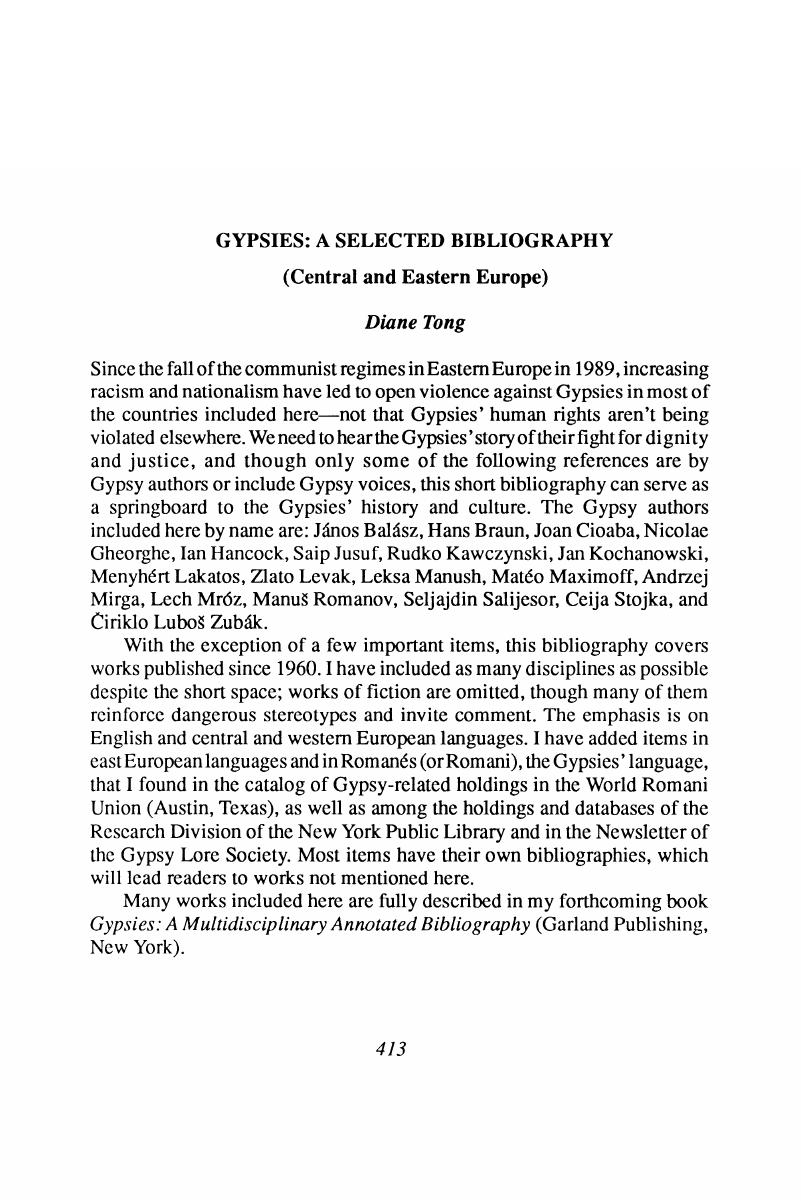Karpati, Mirella, et al. “
I crimini contro l'umanità in Polonia e in Europa 1939–1945.”
Lacio Drom
20:
2-3 (March-June 1984), 3-47. [“Translation of papers concerning persecution and extermination of Gypsies, read at a meeting organized by the Commission of Inquiry into Nazi crimes, Polish Ministry of Justice, held April 14-17,
1983. Contributions by Lech Mroz, Jacek Wilczur, Stanislaw Zabierowski, Cezary Jablonski, Donald Kenrick, and Mirella Karpati.”]
Google Scholar 